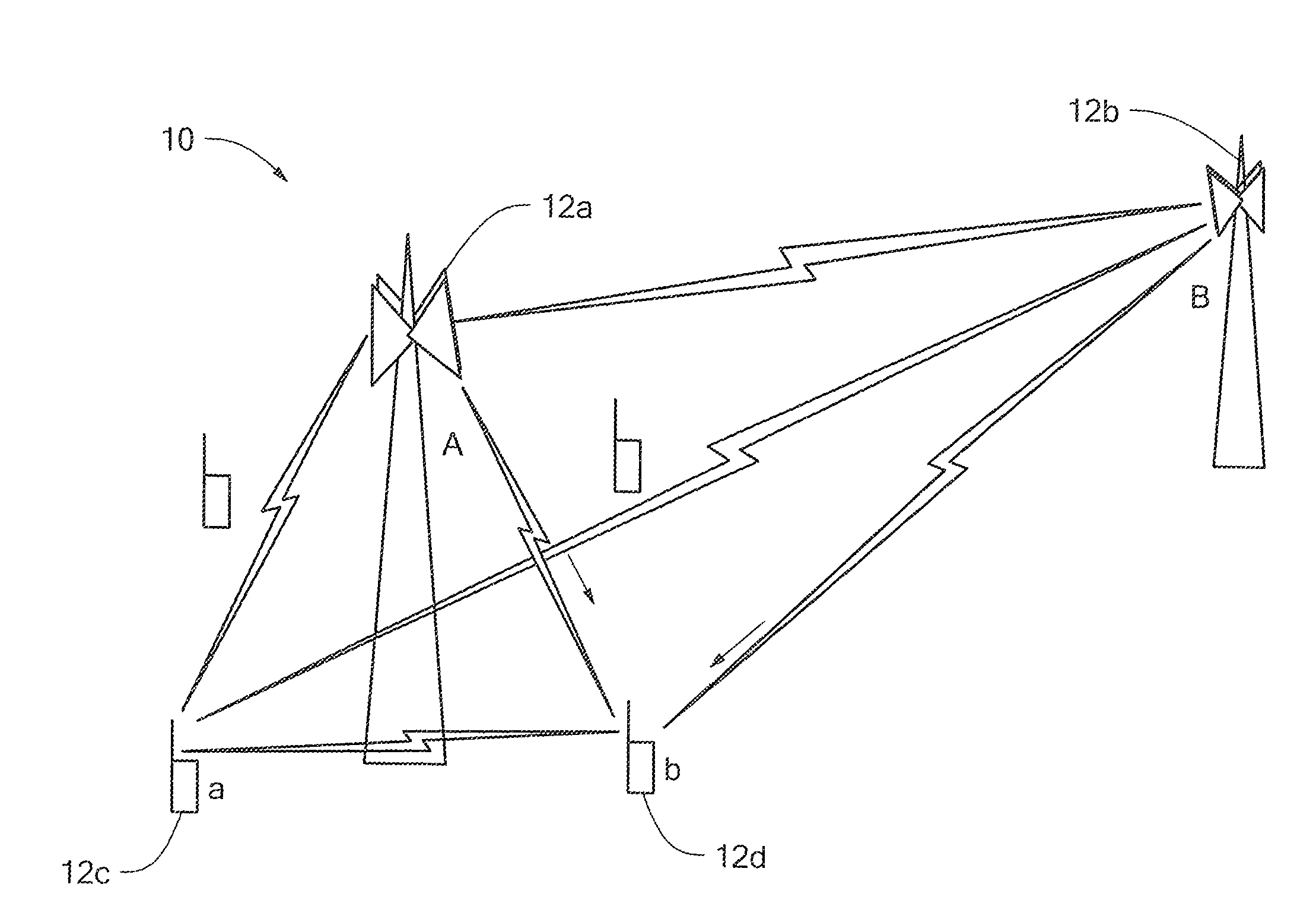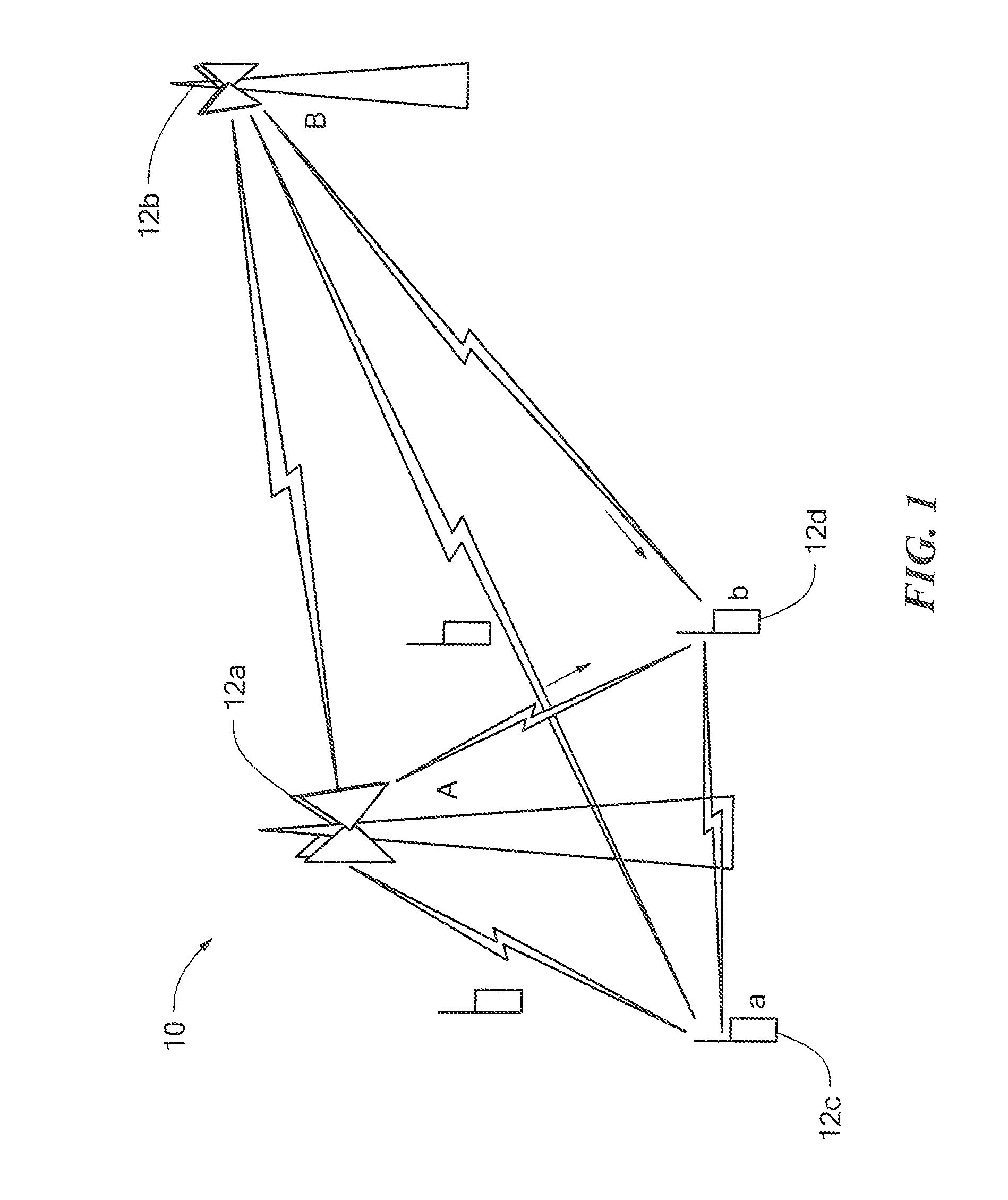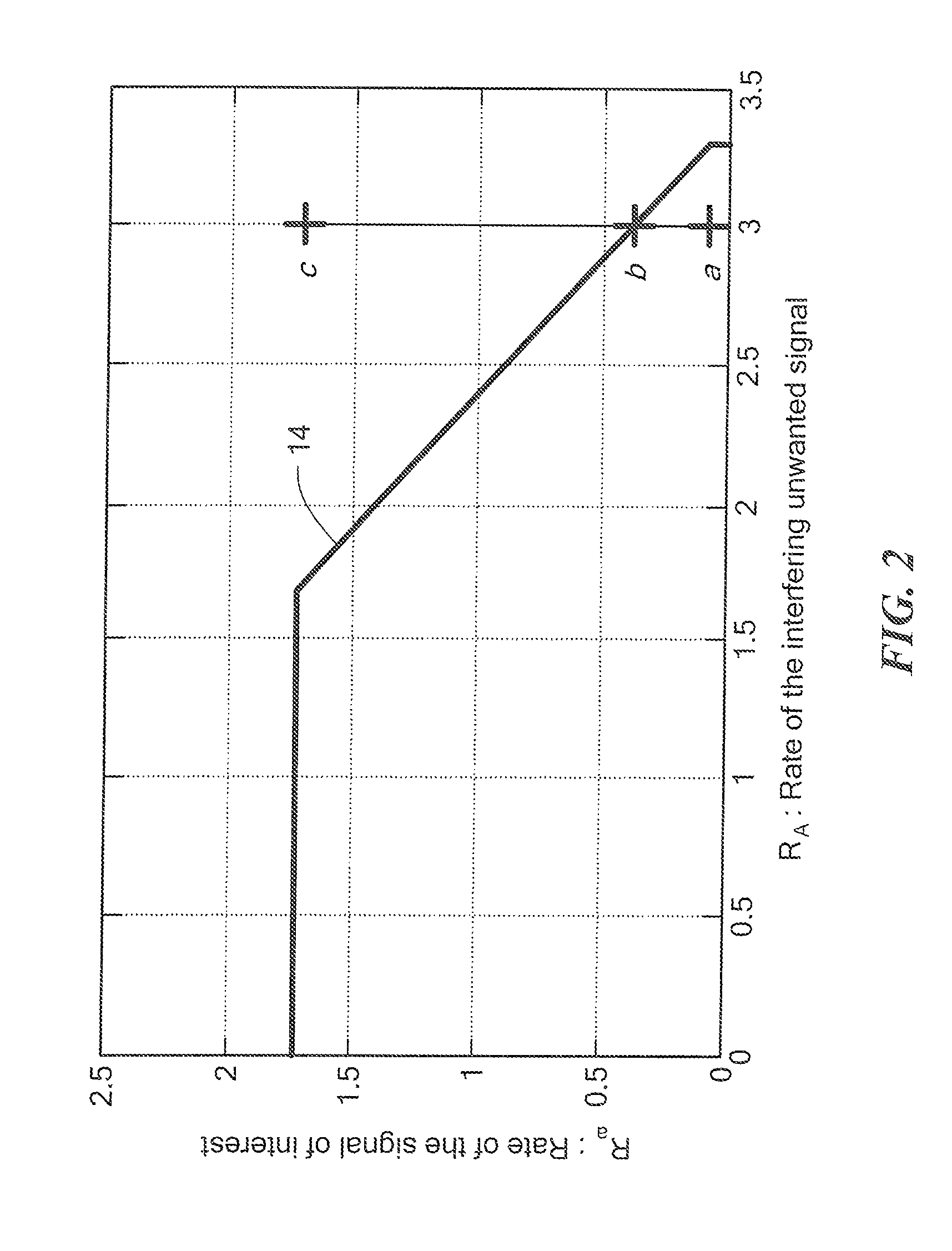Method and apparatus for making optimal use of an asymmetric interference channel in wireless communication systems
a wireless communication system and interference channel technology, applied in the field of wireless communication, can solve the problems of limited spectrum, inability to use multi-used detection algorithms, inability to achieve multi-use detection algorithms, etc., and achieve the effect of enhancing the throughput of a secondary sender-receiver pair
- Summary
- Abstract
- Description
- Claims
- Application Information
AI Technical Summary
Benefits of technology
Problems solved by technology
Method used
Image
Examples
Embodiment Construction
[0022]Before describing a method and apparatus for making optimal use of an asymmetric interference channel in a wireless communication system, some introductory concepts and terminology are explained. Communicating data from one location to another requires some form of pathway or medium between the two locations. In telecommunications and computer networking, a communication channel, or more simply “a channel,” refers to a connection between two locations over a transmission medium. The connection may, for example, be a logical connection and the transmission medium may be, for example, a multiplexed medium such as a radio channel. A channel is used to convey an information signal, for example a digital bit stream, from one or several source or sending nodes (or more simply sources or transmitters) to one or several destination or receiving nodes (or more simply destinations or receivers). Regardless of the particular manner or technique used to establish a channel, each channel h...
PUM
 Login to View More
Login to View More Abstract
Description
Claims
Application Information
 Login to View More
Login to View More - R&D
- Intellectual Property
- Life Sciences
- Materials
- Tech Scout
- Unparalleled Data Quality
- Higher Quality Content
- 60% Fewer Hallucinations
Browse by: Latest US Patents, China's latest patents, Technical Efficacy Thesaurus, Application Domain, Technology Topic, Popular Technical Reports.
© 2025 PatSnap. All rights reserved.Legal|Privacy policy|Modern Slavery Act Transparency Statement|Sitemap|About US| Contact US: help@patsnap.com



